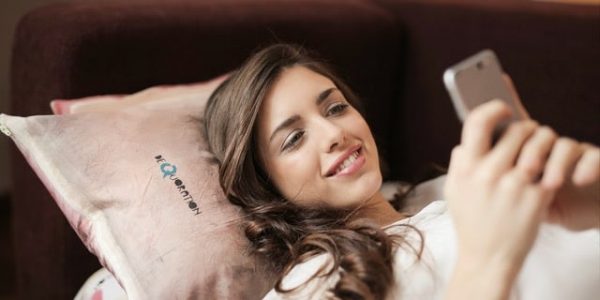Warning: Undefined array key 1 in /home/602518.cloudwaysapps.com/cspedpjass/public_html/wp-content/themes/disturbmenot/inc/breadcrumbs.php on line 6
New Study Points out the Worst App to Use Before Bed
written by / January 21, 2022

It is widely known that electronic devices have various disruptive effects on one’s sleep. However, a new study goes even deeper—exploring which mobile app has the greatest negative impact on one’s quality of sleep. About a billion users won’t like the answer—TikTok.
The research conducted by Sleep Junkie involved 2,000 participants and focused on two sleep quality parameters:
- sleep latency or the time it takes for one to fall asleep when using an app beforehand.
- The duration of the sleep phase that is most restorative for cognition—the rapid eye movement phase (REM sleep).
On average, TikTokers needed an hour and seven minutes to fall asleep, and their REM sleep was half of what is recommended. More precisely, participants spent just 14% of their sleep time in REM sleep. However, other popular mobile apps didn’t do much better.
For instance, Instagram users needed 58 minutes on average to fall asleep, and once asleep, they spent 15.5% of their sleep cycle in the REM phase. Snapchat users did slightly better, spending 16% of their sleep in the REM phase and taking 56 minutes to fall asleep.
Surprisingly, Twitter and Facebook had the best results among the studied social media platforms.
Those using Twitter got 18% of REM sleep and needed 50 minutes to fall asleep, whereas Facebook users took 45 minutes to doze off and spent 19.5% in the REM phase.
In comparison, participants who weren’t using any gadgets prior to sleep spend 23% of their sleep cycle in REM sleep. This falls in the middle of the 20%-to-25% range recommended by scientists and experts.
So, what’s the deal here?
According to the researchers, TikTok is particularly disruptive because it boosts the release of adrenaline and dopamine, causing a euphoria that postpones and disturbs sleep.
What’s more, blue light-emissions emitted by phone screens inhibit melatonin production. Although melatonin levels can easily be managed with good melatonin supplements, dopamine and adrenaline levels are more complicated to control.
Warning: Undefined array key "format" in /home/602518.cloudwaysapps.com/cspedpjass/public_html/wp-content/themes/disturbmenot/template-parts/post-item/post-comment.php on line 23
Warning: Undefined variable $commenter in /home/602518.cloudwaysapps.com/cspedpjass/public_html/wp-content/themes/disturbmenot/template-parts/post-item/post-comment.php on line 27
Warning: Trying to access array offset on value of type null in /home/602518.cloudwaysapps.com/cspedpjass/public_html/wp-content/themes/disturbmenot/template-parts/post-item/post-comment.php on line 27
Warning: Undefined variable $commenter in /home/602518.cloudwaysapps.com/cspedpjass/public_html/wp-content/themes/disturbmenot/template-parts/post-item/post-comment.php on line 29
Warning: Trying to access array offset on value of type null in /home/602518.cloudwaysapps.com/cspedpjass/public_html/wp-content/themes/disturbmenot/template-parts/post-item/post-comment.php on line 29